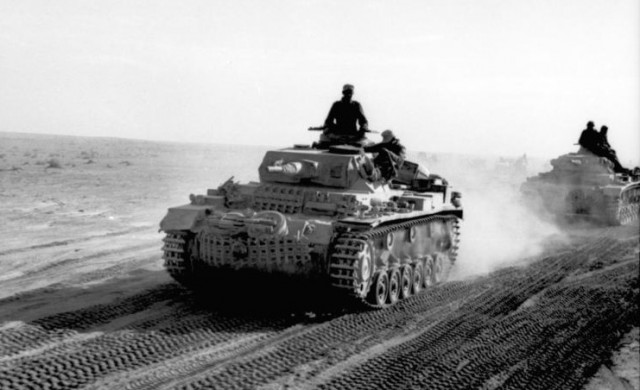For the first two and half years of World War II and before the advent of the Panzer IV, the Panzer III medium tank, officially known as the Panzerkampfwagen III, served as the main battle tank of the German forces.
But with the coming of the Soviet T-34 medium tank, which packed an exceptional combination of speed, firepower, armor, and ruggedness, the Panzer III was forced to retire, paving the way for the improved Panzer IV.
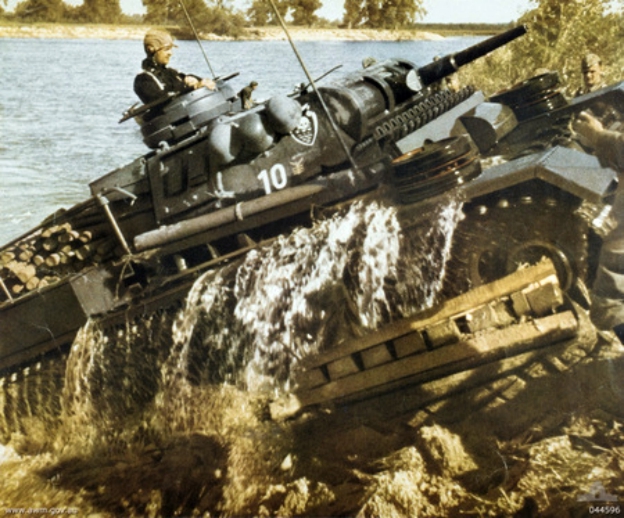
However, the Panzer III’s sturdy, reliable and long-lasting chassis formed the basis for one of the most successful self-propelled guns of the Second World War, the Sturmgeschütz III tank destroyer.
The Panzer III was developed following specifications released by Heinz Guderian. The Army Weapons Department drew up plans for the medium tank based on Guderian’s specifications, and manufacturers such as Daimler-Benz, MAN SE, Krupp AG, and Rheinmetall AG began producing prototypes.
The first model of the Panzer III was unveiled in May 1937 as Ausführung A. (Ausf. A), and two years later, mass production began.
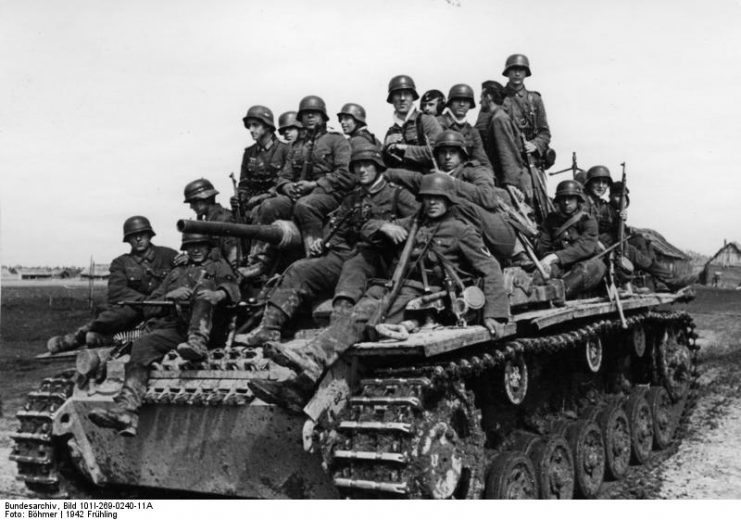
The Panzer IIIs were among the first tanks to use torsion-bar suspensions. The Panzer III was built with a three-man turret, just like the British Vickers Medium tanks. This feature allowed complete concentration by the commander while executing tactics on the field, and thus the Panzer IIIs had a combat advantage–very few other tanks had three-man turrets.
From its first mass production in 1939 to the last in 1943, about 5,775 Panzer III Ausf. As were produced, with 14 variants labeled A through N. The Ausf. N, the last of the Panzer IIIs, was designed for anti-infantry and backup roles. It was fitted with a 7.35 cm KwK 37 L/24 cannon, which early Panzer IVs used as their main armament.
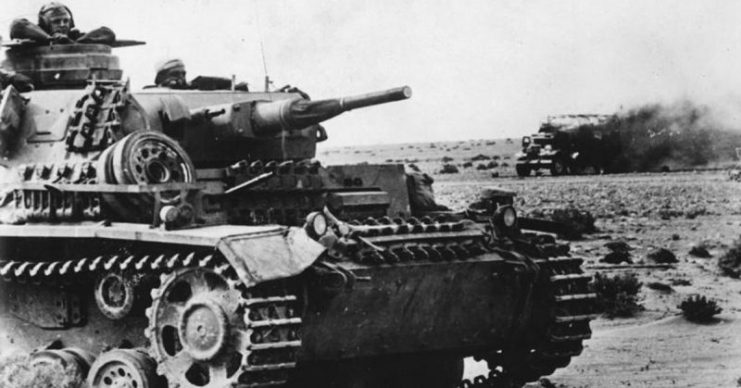
Panzer IIIs also carried a High Explosive Anti-Tank (HEAT) warhead which could penetrate heavily armored tanks. However, this ammunition was strictly for defense.
Generally, Panzer IIIs weighed 23 tons and had a power-to-weight ratio of 12 hp/ton. 296 horsepower was generated by its 12-cylinder Maybach HL 120 TRM engine, and it could move at a maximum speed of 25 mph.
The earliest Panzer IIIs had armor with 1.18″ thickness or less, but later models beginning with the Ausf J had their armor thickness improved to nearly 2″ all around.
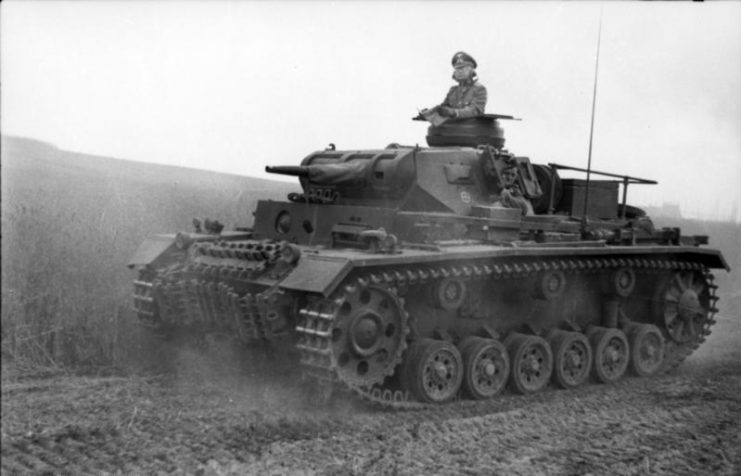
Following their commissioning, Panzer IIIs were used extensively during the Second World War. They performed in the invasion of Poland, the Fall of France, Operation Barbarossa and the Battle of Kursk in the Soviet Union, and the North African campaigns. At the time of the Poland and French campaigns, they were the best medium tanks of the German Army.
During the North Africa Campaign, they faced the M3 Stuarts and Crusader cruisers of the Allied forces. The Panzer III could sufficiently engage these tanks, but fell short in capability against Matilda tanks and M3 Lee tanks.
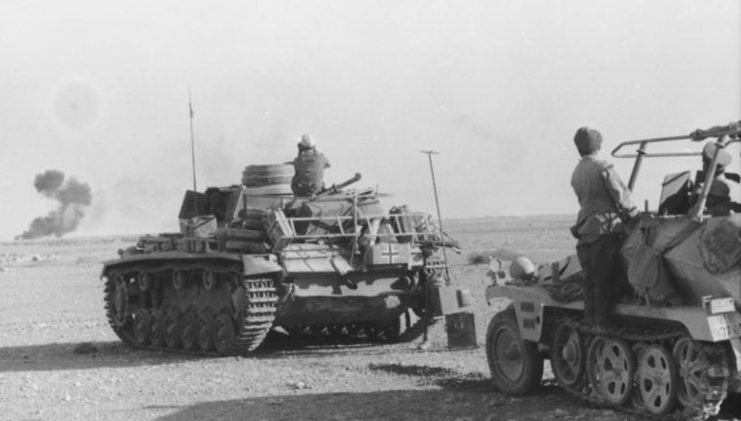
Following the losses and subsequent defeat of the German military at the Battle of Kursk, the Panzer IIIs were replaced by the more advanced Panzer IVs and were tasked with minor roles.
They were slowly retired from active duty and by the time the war ended, the last of them had been sent to German tank factories where their assault gun chassis were used to manufacture the most largely produced German tank destroyer and the most successful self-propelled guns of World War II, the stuG IIIs.
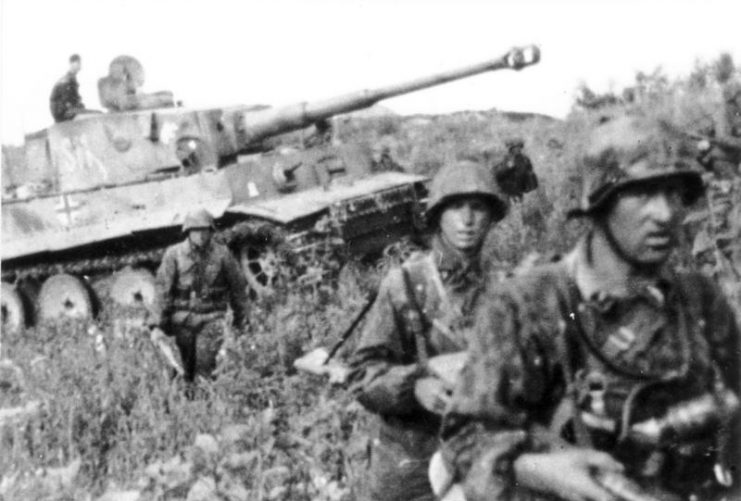
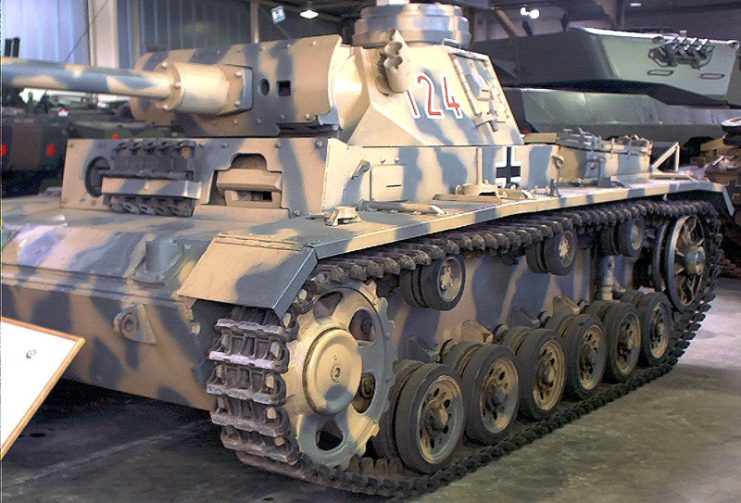
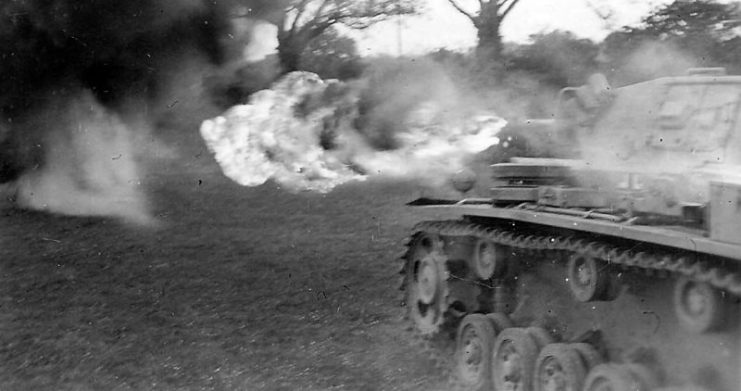
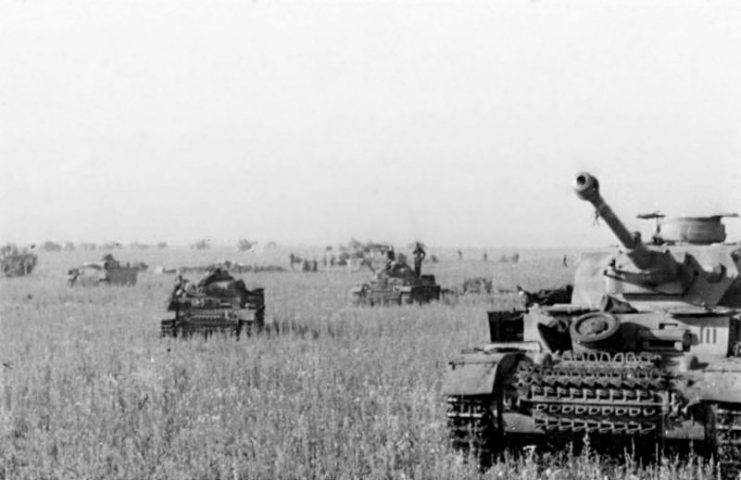
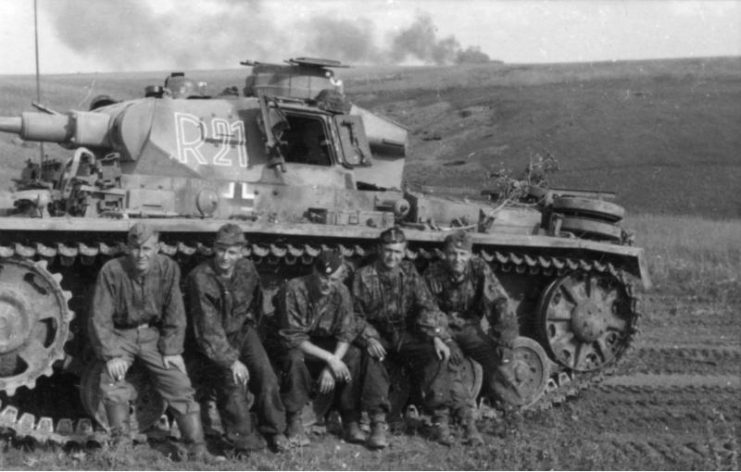
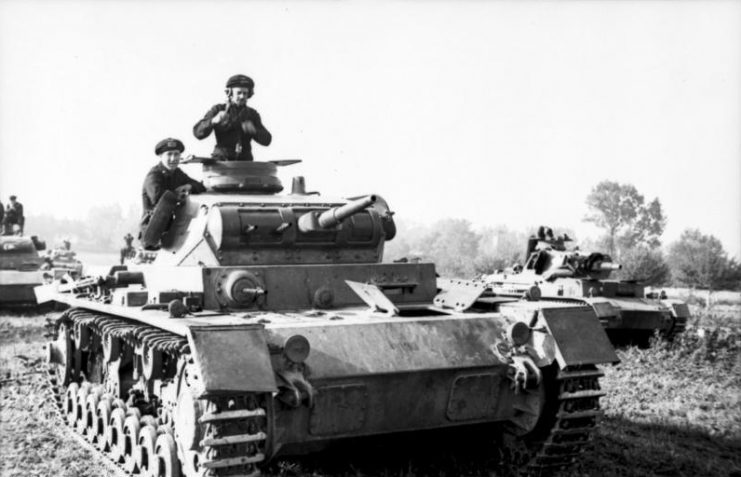
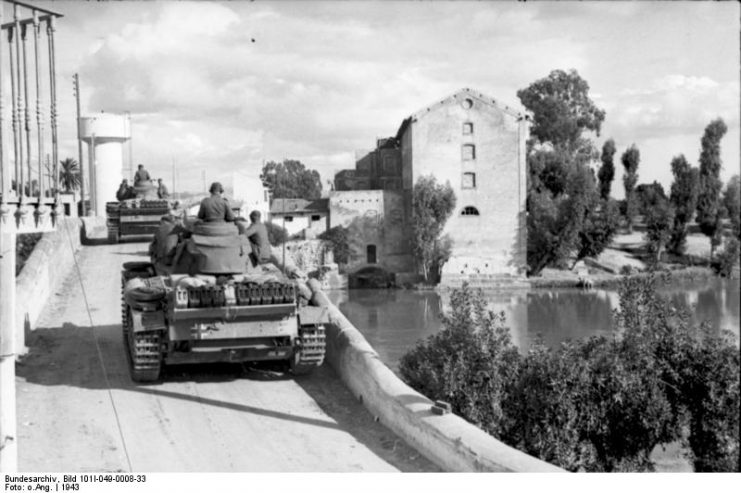
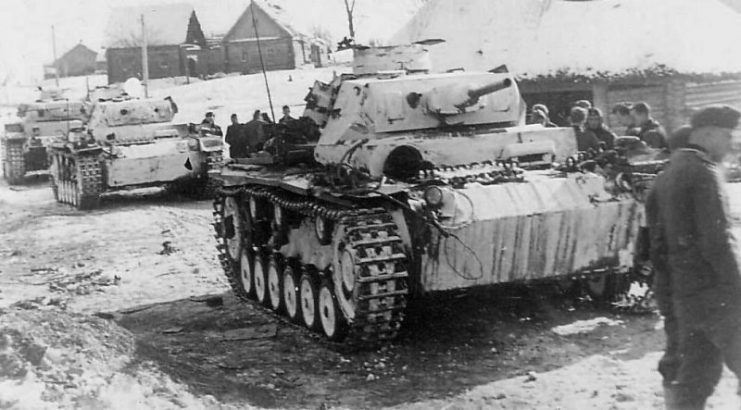
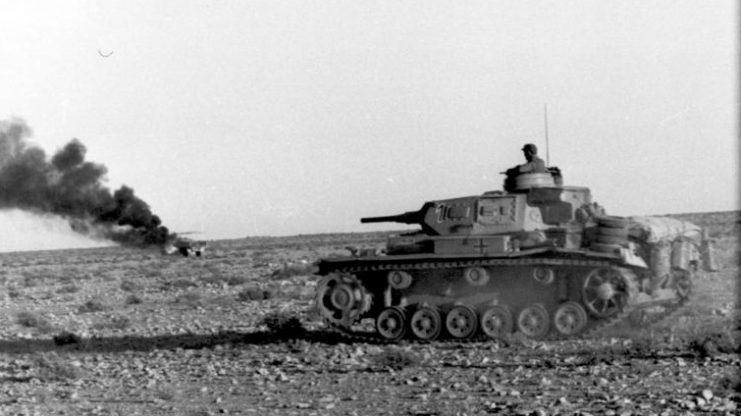
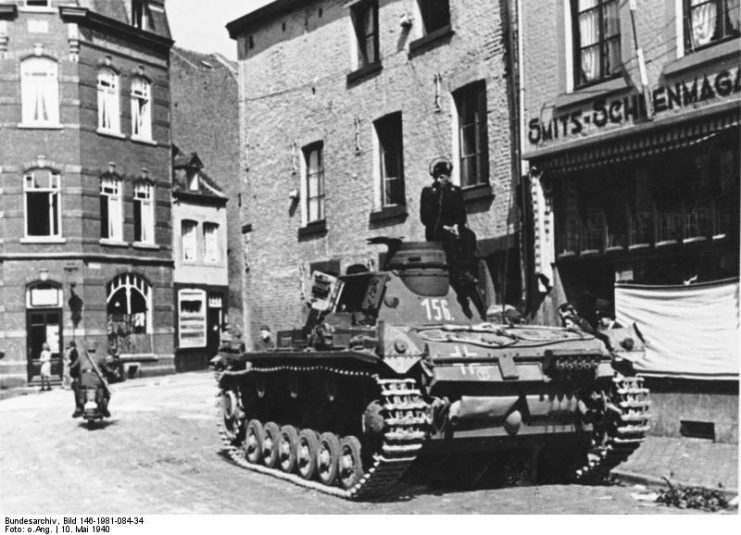
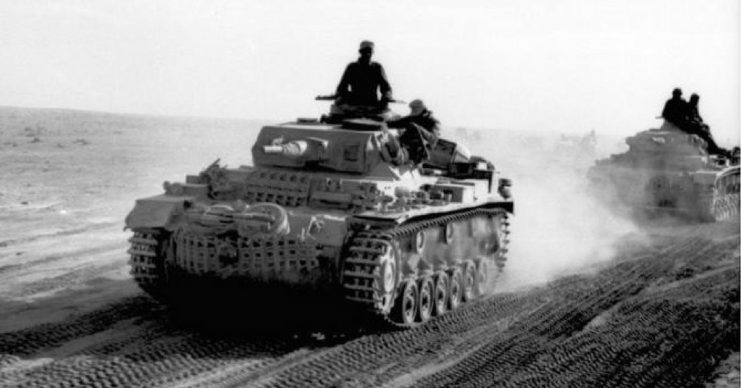

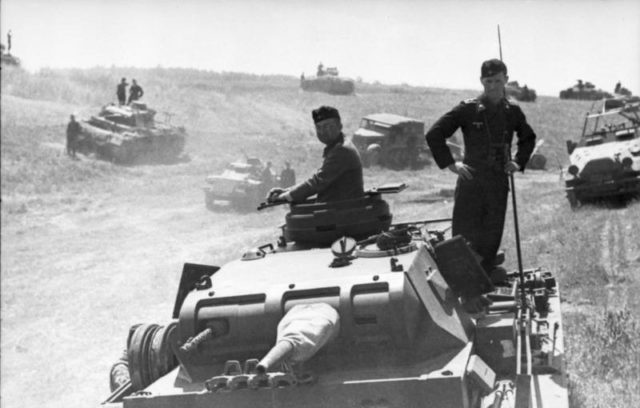
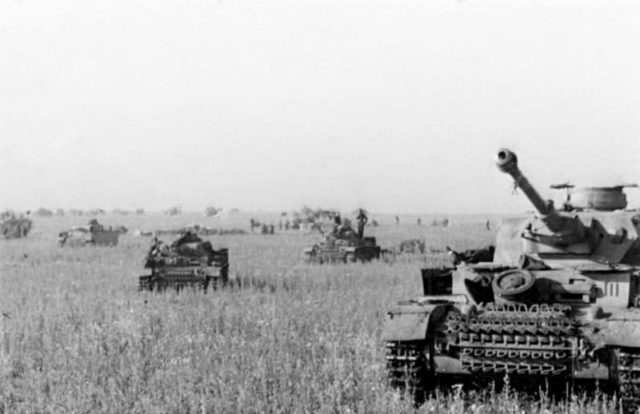
![Panzer III of Division “Grossdeutschland” launches its flamethrower. Soviet Union, 1943/44 [Bundesarchiv, Bild 101I-732-0114-16 / CC-BY-SA 3.0].](https://www.warhistoryonline.com/wp-content/uploads/sites/64/2016/07/29.Bundesarchiv_Bild_101I-732-0114-16_Russland_-_Mitte_Flammenwerfer-Panzer-640x424.jpg)
![A column of Panzer III tanks in the Eastern Front, July 1943. [Bundesarchiv, Bild 101I-219-0562A-06 / Scheffler / CC-BY-SA 3.0].](https://www.warhistoryonline.com/wp-content/uploads/sites/64/2016/07/24.Bundesarchiv_Bild_101I-219-0562A-06_Russland_Kolonne_mit_Panzer_III-640x415.jpg)
![A German Panzer III Ausf M moves along a dusty road in Sicily, August 1943. [© IWM (MH 6341)]](https://www.warhistoryonline.com/wp-content/uploads/sites/64/2016/07/48.-640x463.jpg)
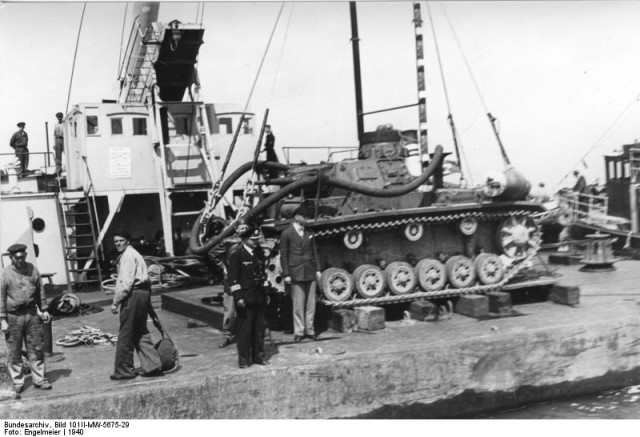
Read another story from us: A7V: The First Panzer – The Tank Museum
